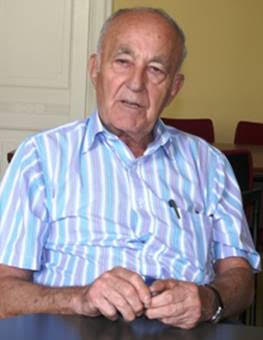
THE VOICE OF INTERNATIONAL LITHUANIA
|
VilNews has its own Google archive! Type a word in the above search box to find any article.
You can also follow us on Facebook. We have two different pages. Click to open and join.
|
Archive for 2011
![]()
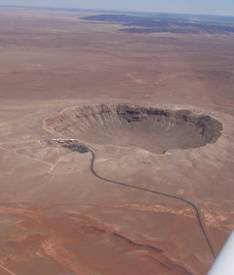
Place 21. Winslow, Arizona
This stunning shot of the Barringer Meteorite Crater in Winslow, Arizona is such a fine sight to see. It is estimated that the impact occurred around 50,000 years ago, the result of a meteor impact at some 25,000 mph. Putting it in military terms, the equivalent explosion would have been the same as a 20 Megaton hydrogen bomb.
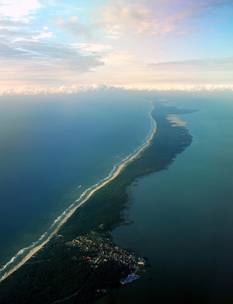
Place 16. Curonian Spit, Russia/Lithuania
This spit, shared by Russia and Lithuania is around 80 miles long and up to two miles wide and its largest girth. The photograph, entitled ‘Following the Sun’ is aptly named and is well framed giving an amazing sense of perspective towards the horizon.
Read more:
http://www.fhr-net.co.uk/blog/2011/10/19/21-awesome-views-from-plane-windows/
- Bookmark :
- Digg
- del.icio.us
- Stumbleupon
- Redit it
- Posted by - (0) Comment
Donatas Januta: Reply to Olga Zabludoff
The ‘Green House’ has been used as a red herring*

Donatas Januta
Dear Olga,
You are absolutely correct that the Jews had little choice but earn their living as merchants and traders. I was not judging how they got there. But regardless how they got there, I was only responding to their activities there, to your claim regarding Jewish contribution to the Lithuanian nation’s economy.
Let’s examine it from another perspective.
To read the post, go to
SECTION 5 or SECTION 12
- Bookmark :
- Digg
- del.icio.us
- Stumbleupon
- Redit it
- Posted by - (0) Comment
Dr. Irena Veisaite:
Re Holocaust in Lithuania
We have to build bridges!
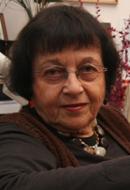
Dr. Irena Veisaite.
Dear Aage,
I fully share with you the view that people are thinking in a different way and have the right to express their position and feelings. But I am also convinced that different arguments should be expressed at the same time, if possible, on the same page.
Dr. Yves Plasseraud is well known as a fighter for minority rights and against any xenophobic trends including also anti-Semitism.
I decided to write this little note only because I noticed some concrete mistakes in the articles of Mr. Bertini and Donatas Januta.
- Bookmark :
- Digg
- del.icio.us
- Stumbleupon
- Redit it
- Posted by - (0) Comment
Holocaust in Lithuania;
Response to Didier Bertin.
The Lithuanian authorities are better than most in the region
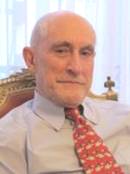
Dr. Yves Plasseraud
By Yves Plasseraud, Paris
I would like to answer briefly to the paper of my compatriot Didier Bertin, posted in VilNews on October 15. Discussion is always positive and I welcome his contribution.
I would first like to point out that my incriminated paper only concerned the attitude of some intellectuals vis-a-vis the Holocaust question in Lithuania and by no means « the martyrdom of the jewish people » in itself.
Now, concerning Bertin’s reaction, I note that although many points he raises are unfortunately true and worth mentioning, I cannot agree with him on several issues :
The Lithuanian authorities are certainly not 100% right in their treatment of the jewish question, but, they are better than most of their counterparts in the region.
- Bookmark :
- Digg
- del.icio.us
- Stumbleupon
- Redit it
- Posted by - (0) Comment
Olga Zabludoff:
Reply to Donatas Januta re Holocaust in Lithuania (3)
I dare to hope that our debate can build bridges to a better understanding
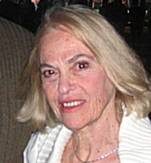
Olga Zabludoff
Dear Donatas,
The last paragraph in your article of 8 November is a good place to begin my response. I concur that our differences of opinion as well as our areas of agreement should be viewed as an exchange of honest, healthy dialogue. I would even dare to hope that it can begin to build bridges to a better understanding of all the issues we wander into.
- Bookmark :
- Digg
- del.icio.us
- Stumbleupon
- Redit it
- Posted by - (0) Comment
Donatas Januta: Reply to Olga Zabludoff re Holocaust in Lithuania
To say that there were other genocides does not diminish the Holocaust

Donatas Januta
Dear Olga,
Apparently, we agree that Jews and Lithuanians both suffered greatly during World War II. And we both agree that Timothy Snyder’s Bloodlands is an excellent book. But, there are still a few things that we don’t agree on. And I hope that we can disagree without necessarily imputing bad motives to each other.
I do not dispute Dov Levin’s claim that Jews were an integral part of Lithuania’s economy. But the Jewish lending of money to the Polish kings and other nobles that you brought up, which enabled them to continue their extravagant lifestyles at the people’s expense, had both a short-term and a long-term negative impact on the country and the lives of Lithuanians. Yes, the Jews were also mainly merchants, traders, shopkeepers and craftsmen. But to evaluate their contribution to the country’s economy in those fields is a little hard, because Jews had a monopoly in Lithuania in those fields, and it is acknowledged that all monopolies, with their price-fixing, stifling of competition, and other evils, generally have a negative impact on a country’s economy. That’s why in the US we have anti-trust laws, anti-price-fixing laws, etc. Lithuanians did not have any of those protections.
One result was that, after 600 years of Lithuanians and Jews living side by side, on the eve of World War I, Lithuania was an economically depressed and backward country.
To read this and the other posts on this topic, go to:
SECTION 5 or SECTION 12
- Bookmark :
- Digg
- del.icio.us
- Stumbleupon
- Redit it
- Posted by - (0) Comment
Olga Zabludoff: Reply to Donatas Januta re Holocaust in Lithuania
I love and respect Lithuanians no less than I do my American friends, both Jews and non-Jews

Olga Zabludoff
Washington, DC, USA
Dear Donatas,
Thank you for your gracious opening paragraph to our discussion. I will try to comment on the points you raise in your letter.
I do not dispute Dina Porat’s finding that 99.5% of the Lithuanian population was neither directly nor indirectly involved in the killing of Jews. I would not dispute the findings of any reputable researcher/historian. But what I wish to point out is that one-half of 1% of the 1941 Lithuanian population equaled about 15,000 persons. Looking at the Jewish population of about 200,000 at the time, the ratio between killers and victims was 1: 13.
That can account for high efficiency. The real problem was that the other 99.5% of the population chose to close their eyes.
"All that is necessary for the triumph of evil is that good men do nothing." This quote from Edmund Burke is the painful truth in the story of the Holocaust as well as other major tragedies.
To read more, go to
SECTION 5 or SECTION 12
- Bookmark :
- Digg
- del.icio.us
- Stumbleupon
- Redit it
- Posted by - (0) Comment
Donatas Januta:
Reply to Olga Zabludoff
re Holocaust in Lithuania
Why can’t the Lithuanians simply grieve their own tragedy, and the Jews grieve theirs?

Donatas Januta:
Dear Olga:
Of the numbers of Lithuanian Jews that were killed in 1941-1944 I have seen several numbers, all of which were around 90% or more. If you feel more comfortable with 95-96%, I won’t quarrel with you. The fact is that any such number is an enormous number, and it was and is a great tragedy. If there was anything that I could do to undo it, I would.
But you don’t seem to dispute the Israeli historian Dina Porat that 99.5% of the Lithuanian population was neither directly nor indirectly involved.
As for your claim that the Jews contributed “enormously” to Lithuania’s economy and culture, you quote that wealthy Jews lent money to the “Lithuanian authorities” when they got into financial trouble. But that was in centuries past, and those Lithuanian authorities were either individual warlords, or the Polish kings of the joint commonwealth, who got into personal financial trouble due to their extravagant lifestyles. And all those Jewish loans then went into their own private pockets. And, of course, the Jewish lenders did not act solely out of a sense of charity; they received more than a quid pro quo. The Lithuanian nation, i.e., the people of Lithuania, however, did not benefit at all from letting those same “Lithuanian authorities” continue living their extravagant lifestyles, at, ultimately, the people’s expense. That's why those Jewish "contributions" to the Lithuanian nation's economy were, as I said, either ziltch, or perhaps less than ziltch.
To read more, go to:
SECTION 5 or SECTION 12
- Bookmark :
- Digg
- del.icio.us
- Stumbleupon
- Redit it
- Posted by - (0) Comment
A number of people have been commenting on this topic over the latest days.
Go to Section 5 or Section 12 to read all comments.
Mr. Januta twists facts and figures to suit his arguments
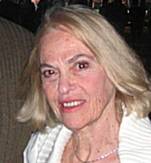
Olga Zabludoff
By: Olga Zabludoff
Washington, DC, USA
Mr. Januta’s article goes right to the heart of the problem: the tendency of critics like him to accuse others of being misinformed and of misstating facts. Indeed it is Mr. Januta who twists facts and figures to suit his arguments. Even when his facts are “correct,” they are simply half-truths.
For example: Yes, there is a Holocaust Museum in Vilnius, but to compare the pitiful little hidden building (the Green House) with the state-of-the-art Museum of Genocide located on a major street is like comparing a mouse to an elephant.
- Bookmark :
- Digg
- del.icio.us
- Stumbleupon
- Redit it
- Posted by - (0) Comment
So-called ‘double genocide’ and other red herrings

Donatas Januta
By Donatas Januta
Mr. Didier Bertin is either woefully misinformed or intentionally misstates facts in his “reply” to Yves Plasseraud’s article “Lithuania and the memory of the Shoah (Holocaust)”.
He refers to the crimes of Hitler and Stalin as the “Double Genocide” theory, states that the comparison of the two is initiated by Lithuania and/or its government, and that the reason for it is to somehow minimize the tragedy which the world’s Jews suffered during the Second World War. But the comparison between the tragedies brought by those two psychopaths, Hitler and Stalin, is not of Lithuanian origin or usage at all.
Mr. Bertin chooses not to give credit where credit is due. The comparison between Hitler’s and Stalin’s crimes was first made and thoroughly analyzed by the prominent Israeli historian Dov Levin, in his book “The Lesser of Two Evils”.
Read more at:
Section 5 and Section 12
- Bookmark :
- Digg
- del.icio.us
- Stumbleupon
- Redit it
- Posted by - (1) Comment
Lithuania and the Holocaust, a comment to the Didier Bertin article:
Lithuania cannot appease both world Jewry and far-right extremists
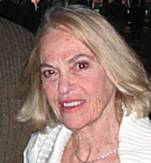
Olga Zabludoff
By: Olga Zabludoff
Washington, DC, USA
I commend Didier Bertin's knowledgeable and sensitive observations in his article "Lithuania and the Memory of the Holocaust." My comments here are more in the form of a PS to Mr. Bertin's words. My take-off point is his reference to the term “Double Genocide,” a government-endorsed concept that has been bandied about in Lithuanian political circles in recent times. But more about this later. Mr. Bertin borrows the term for application in a different dual context: the original genocide of the Jewish people and the current movement on the part of the Lithuanian government to neutralize if not to obliterate the remembrance of the Holocaust.
To read more go to:
Section 5 or Section 12.
- Bookmark :
- Digg
- del.icio.us
- Stumbleupon
- Redit it
- Posted by - (0) Comment
Reply to the article of Mr. Plasseraud published in VilNews in October 2011
Lithuania and the memory of the Holocaust

By Didier Bertin,
President of the Society for the Promotion of the European Human Rights Model (France) – 14 October 2011
We love Lithuania and its wonderful and precious language and fine people! The sole acute problem of Lithuania might be its government.
There is still a lot to do in this country for Human Rights Organizations like fighting Racism, antisemitism, Homophobia and promoting education and free information as the corner stone of democracy for a member-State of the European Union.
Mr. Plasseraud reminded important criticisms which could be made in Lithuania and that he does not share despite they are true in our opinion: The obliteration of the participation of Lithuanian militias in Pogroms and Holocaust, the “current” authorization of Nazi Parades and the creation of a new concept which put in equivalence of the Holocaust and the suffering of people under communist dictatorship whose consequence is the arbitrary second ranking of the Holocaust. This concept is named double Genocide and made a mathematical equality between events, which has no sense in History. In fact this concept aims to obliterate or reduce one of the two components of the equation, which is clearly the Holocaust as this can be seen in Lithuania.
As a matter of fact the Vilnius Genocide Museum displays only facts on the Soviet oppression and we were personally told by a member of the Staff that for “the Jewish things” we have to go to the green
hut named “Green House”, which is a very poor small a museum in a wooden hut and which at last refers to the Holocaust. This so called museum is as difficult to find as the Holocaust in the Lithuanian History. However and on top of these negative facts many others were forgotten were forgotten by Mr. Plasseraud.
We were also shocked by similar substantial obliterations in the museum of the 9th Fort in Kaunas. We had also the opportunity to check the content of a History school book of a 15 years old Lithuanian schoolboy and we noticed that it was far from the richness of our French school books. The History school book we saw was very slim and presented an over- simplified version of events.
To read more go to Sections 5 and Section 12.
- Bookmark :
- Digg
- del.icio.us
- Stumbleupon
- Redit it
- Posted by - (1) Comment
![]()
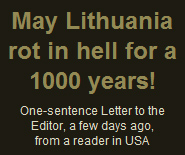
Lithuania and the memory of the Shoah (Holocaust)

May Lithuania rot in hell for a thousand years! This is what one could recently read in a Letter to VilNews’ Editor. This vindictive sentence sums up, in a nutshell, the language of a number of the current Western (including Israeli) and Russian discourses on this Baltic country. The rationale behind this demonization is what the authors of these writings consider as the radical and supposedly built-in anti-Semitism of the Lithuanians.
Yves Plassaraud, Paris – France
To read more, go to
Section 12 – LITVAK FORUM
- Bookmark :
- Digg
- del.icio.us
- Stumbleupon
- Redit it
- Posted by - (0) Comment
How I came to Lithuania 21 years ago (6 of 6)
Some private memories by Aage Myhre, VilNews Editor-in-Chief
aage.myhre@VilNews.com
1991: Oslo and Vilnius
become twin cities
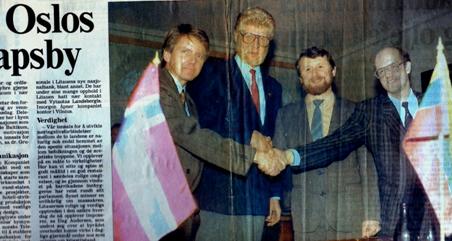
21 January 1991. Soviet military vehicles dominate the streets of Vilnius. Dag Andersen and the author conveys a letter from Oslo, signed by Mayor Michael Tetzschner. Oslo offers Vilnius to become its first friendship city in the West. The letter was enthusiastically received by the Vilnius Mayor Arunas Grumadas and Deputy Mayor Regimantas Ciupaila.
Facsimile: Aftenposten, Norway.
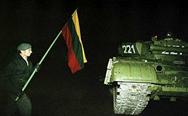 |
Heavy tanks were used by the Soviet forces when they attacked the TV tower and the Parliament building in Vilnius on 13 January 1991 (left). They were met by a wall of unarmed people who refused to allow the intruders to again take control of their homeland. Inside the city they used armoured vehicles on rubber wheels (below). | ||
| It was a bizarre, almost surreal experience to always be spotting, hearing the noise, feel the ground tremble when we were in meetings or trying to get a meal in one of the city's few restaurants. | |||
We often did our eating and drinking in Hotel Lietuva, in the so-called 'Black Bar', where only western, hard currency was accepted. This bar was the centre for international media those January days. Every night we heard stories about howtelevision crews and journalists had experienced rather harsh confrontations with Soviet military units. |
|
||
We were two Norwegians working very much with Lithuanian affairs at this time, Dag Andersen and me. During our visit to Vilnius in January 1991, we brought with us a letter from the city council leader in Oslo, inviting the mayor of Vilnius to sign a sister city agreement. We handed the letter over to Mayor Arunas Grumadas on 21 January while Soviet troops were standing around in the streets and armoured vehicles roaring around us.
The twin city agreement was signed a few months later, and Oslo became the first Western city to enter into such an agreement with Vilnius. I see it as an important symbol of friendship and solidarity at a difficult time for a country under tremendous pressure and terrible abuse from their neighbour to the east.
During 1991 I came back to Lithuania several times. I saw more, understood more. The country began in earnest to fascinate me. I was also in Vilnius during the failed coup in Moscow in August 1991, again thrilling days. On the morning of 30 August 1991 I was probably the first person in modern times that got a legal visa directly to the nation of Lithuania, stamped into my Norwegian passport. 30 August 1991 was the day when the Lithuanian migration authorities finally could do so in accordance with international rules. The Soviet Union was finally a horror of the past. Also formally, Lithuania was once again a free and independent country.
50 years of oppression was over!

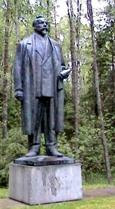
|
ABOVE: During my first visit to Lithuania, in November 1990, I took this picture at Rotušes Square (Town Hall Square) in Vilnius. This was probably the very last picture ever made of the statue of Vincas Mickevičius-Kapsukas. Next morning he had been knocked down by local activists... |
Vincas Mickevičius-Kapsukas was a communist leader, born 1880 in Būdviečiai, Vilkaviškis district, dead 1935 in Moscow. He was a political activist, fighting Tsar Russia, one of the founders and leaders of the Communist Party of Lithuania and the Lithuanian Soviet Socialist Republic (1918–1919).
After the WWII Soviet occupation of Lithuania, his student Antanas Sniečkus (see our article https://vilnews.com/?p=6598 ) propagated Mickevičius' personality cult. In his honour the city of Marijampolė was renamed Kapsukas (1956–1989) and Vilnius University (1955–1990) bore his name. Two large sculptures of Mickevičius were erected in Vilnius: one here, in front of the Vilnius Town Hall (1962) and another, depicting Mickevičius with Lenin, in Antakalnis (1979).
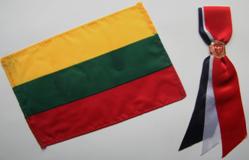
- Bookmark :
- Digg
- del.icio.us
- Stumbleupon
- Redit it
- Posted by - (5) Comment
How I came to Lithuania 21 years ago (6 of 6)
Some private memories by Aage Myhre, VilNews Editor-in-Chief
aage.myhre@VilNews.com
1991: Oslo and Vilnius
become twin cities

21 January 1991. Soviet military vehicles dominate the streets of Vilnius. Dag Andersen and the author conveys a letter from Oslo, signed by Mayor Michael Tetzschner. Oslo offers Vilnius to become its first friendship city in the West. The letter was enthusiastically received by the Vilnius Mayor Arunas Grumadas and Deputy Mayor Regimantas Ciupaila.
Facsimile: Aftenposten, Norway.
|
|
Heavy tanks were used by the Soviet forces when they attacked the TV tower and the Parliament building in Vilnius on 13 January 1991 (left). They were met by a wall of unarmed people who refused to allow the intruders to again take control of their homeland. Inside the city they used armoured vehicles on rubber wheels (below). It was a bizarre, almost surreal experience to always be spotting, hearing the noise, feel the ground tremble when we were in meetings or trying to get a meal in one of the city's few restaurants. |
|
|
|
We often did our eating and drinking in Hotel Lietuva, in the so-called 'Black Bar', where only western, hard currency was accepted. This bar was the centre for international media those January days. Every night we heard stories about how television crews and journalists had experienced rather harsh confrontations with the Soviet military units. |
|
||
We were two Norwegians working very much with Lithuanian affairs at this time, Dag Andersen and me. During our visit to Vilnius in January 1991, we brought with us a letter from the city council leader in Oslo, inviting the mayor of Vilnius to sign a sister city agreement. We handed the letter over to Mayor Arunas Grumadas on 21 January while Soviet troops were standing around in the streets and armoured vehicles roaring around us.
The twin city agreement was signed a few months later, and Oslo became the first Western city to enter into such an agreement with Vilnius. I see it as an important symbol of friendship and solidarity at a difficult time for a country under tremendous pressure and terrible abuse from their neighbour to the east.
During 1991 I came back to Lithuania several times. I saw more, understood more. The country began in earnest to fascinate me. I was also in Vilnius during the failed coup in Moscow in August 1991, again thrilling days. On the morning of 30 August 1991 I was probably the first person in modern times that got a legal visa directly to the nation of Lithuania, stamped into my Norwegian passport. 30 August 1991 was the day when the Lithuanian migration authorities finally could do so in accordance with international rules. The Soviet Union was finally a horror of the past. Also formally, Lithuania was once again a free and independent country.
50 years of oppression was over!

|
|
ABOVE: During my first visit to Lithuania, in November 1990, I took this picture at Rotušes Square (Town Hall Square) in Vilnius. This was probably the very last picture ever made of the statue of Vincas Mickevičius-Kapsukas. Next morning he had been knocked down by local activists... After the WWII Soviet occupation of Lithuania, his student Antanas Sniečkus (see our article https://vilnews.com/?p=6598 ) propagated Mickevičius' personality cult. In his honour the city of Marijampolė was renamed Kapsukas (1956–1989) and Vilnius University (1955–1990) bore his name. Two large sculptures of Mickevičius were erected in Vilnius: one here, in front of the Vilnius Town Hall (1962) and another, depicting Mickevičius with Lenin, in Antakalnis (1979). LEFT: You can today find the statue of Mickevičius-Kapsukas in the Grutas Park in Southern Lithuania. The park is the repository of old Soviet era statues and artefacts that were removed from public places when Soviet occupation of Lithuania ended. |

How I came to Lithuania 21 years ago (6 of 6)
Some private memories by Aage Myhre, VilNews Editor-in-Chief
aage.myhre@VilNews.com
- Bookmark :
- Digg
- del.icio.us
- Stumbleupon
- Redit it
VilNews e-magazine is published in Vilnius, Lithuania. Editor-in-Chief: Mr. Aage Myhre. Inquires to the editors: editor@VilNews.com.
Code of Ethics: See Section 2 – about VilNews. VilNews is not responsible for content on external links/web pages.
HOW TO ADVERTISE IN VILNEWS.
All content is copyrighted © 2011. UAB ‘VilNews’.

 Click on the buttons to open and read each of VilNews' 18 sub-sections
Click on the buttons to open and read each of VilNews' 18 sub-sections 











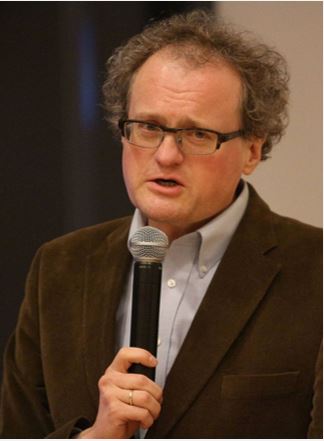
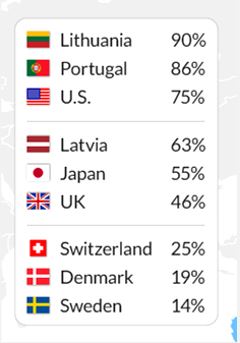
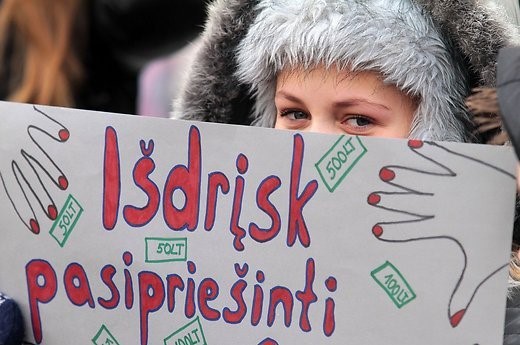


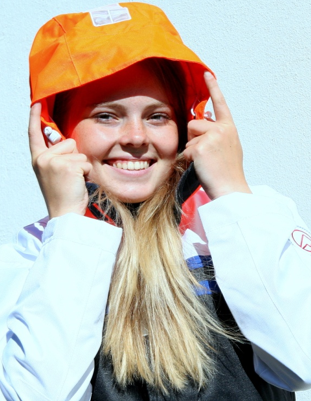
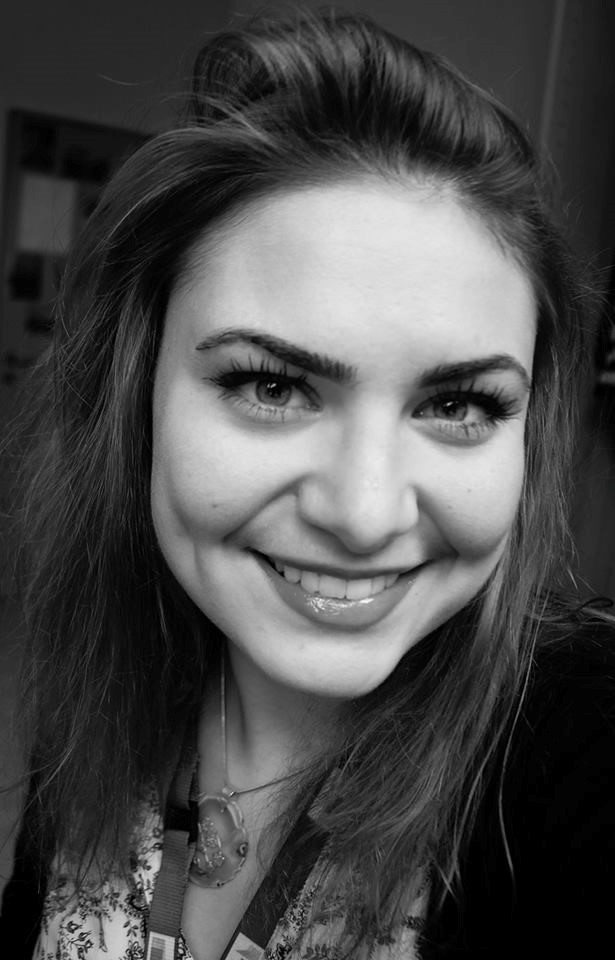
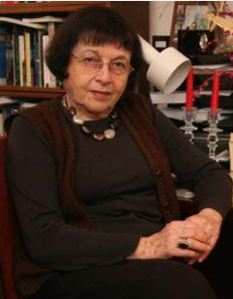
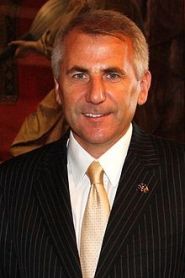
.jpg)
